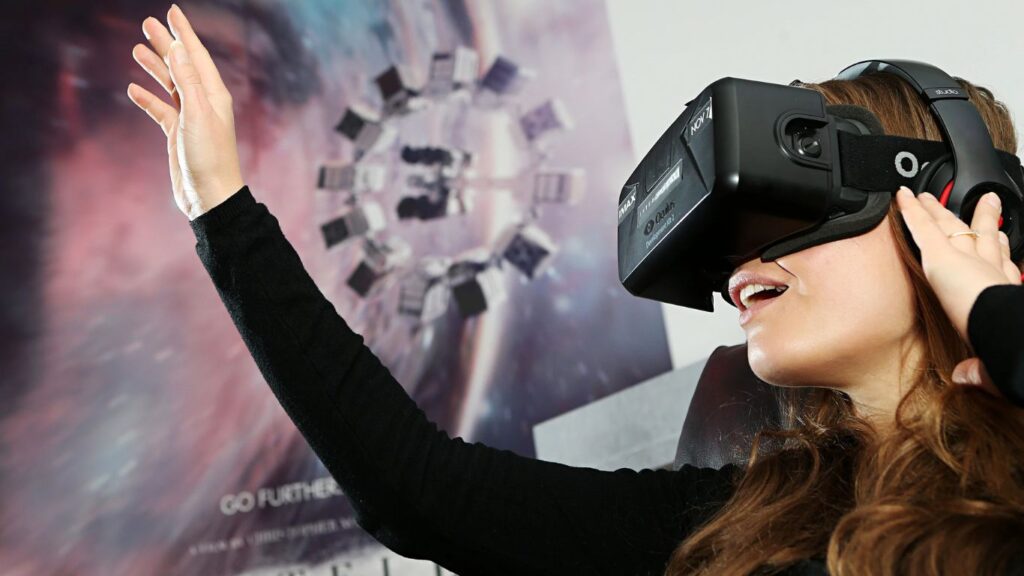In today’s rapidly advancing technological landscape, Cubvh—short for Cube Virtual Helper—is setting a new benchmark. Developed at the University of California, Berkeley, this innovative platform combines Virtual Reality (VR), Augmented Reality (AR), and Artificial Intelligence (AI) into a seamless experience that caters to both personal and professional use. Whether you’re a designer, a gamer, or an educator, Cubvh’s powerful capabilities transform how you interact with technology.
This article delves deep into Cubvh, exploring its features, applications, competitive positioning, and potential for shaping the future of immersive technology.
What is Cubvh?
Cubvh is a context-aware virtual assistant that bridges physical and digital environments. Unlike traditional VR or AR tools, Cubvh integrates machine learning, natural language processing (NLP), and computer vision to create dynamic, user-specific experiences. The platform adapts to individual behaviors and environments, offering real-time guidance, object recognition, and personalized recommendations.
Core Features of Cubvh
- Seamless AR/VR Integration: Effortlessly transitions between augmented and virtual environments.
- Haptic Feedback: Enhances interactions with virtual objects by simulating tactile sensations.
- Object Recognition and Interaction: Recognizes real-world objects and integrates them into virtual spaces.
- AI-Driven Personalization: Uses machine learning to adapt to user preferences and behaviors.
By combining these features, Cubvh enables users to visualize, interact, and innovate across a range of industries.
Key Features in Detail
1. Immersive 3D Environment
At its core, Cubvh delivers a lifelike 3D environment where users can interact with virtual and physical objects in real time. Through advanced physics simulations and computer vision, the platform ensures objects behave realistically.
Example: A furniture retailer can use Cubvh to help customers visualize sofas or tables in their living rooms, offering a personalized shopping experience.
2. Mixed Reality Integration
Cubvh blurs the lines between AR and VR, allowing users to choose the level of immersion.
- In AR mode, Cubvh overlays virtual designs onto real-world objects using smart glasses or augmented reality contact lenses.
- In VR mode, users can explore fully immersive virtual prototypes or gaming environments.
3. Context-Aware Assistance
Cubvh leverages AI to understand the context of tasks or environments. For example, it can:
- Suggest layout improvements during interior design projects.
- Offer game strategy tips based on real-time analysis of gameplay.
4. Gesture and Speech Recognition
Cubvh supports gesture-based controls and voice commands, making navigation intuitive and accessible. This feature is enhanced by natural language processing (NLP), enabling seamless communication with the platform.
5. Haptic Feedback
Cubvh integrates with haptic feedback devices, creating a tactile connection between users and virtual environments. This feature is particularly useful in applications like healthcare and education.
Applications Across Industries

Cubvh is not limited to a single use case; its versatility makes it a valuable tool across multiple sectors. Let’s explore its most impactful applications:
1. Interior Planning and Home Decor
Cubvh revolutionizes interior design by offering tools for:
- Virtual Prototyping: Test layouts, furniture placement, and color schemes in a virtual environment.
- Collaborative Design: Work with designers remotely to refine home decor ideas in real time.
Real-Life Scenario: A homeowner planning a renovation can use Cubvh to visualize changes before committing to costly updates.
2. Gaming and Entertainment
Gaming is one of Cubvh’s most dynamic applications. Features like realistic physics simulations, AI-driven gameplay recommendations, and social VR platforms enhance the user experience.
Use Case:
- Gamers can explore custom-built virtual worlds with lifelike object interactions.
- Cubvh also enables multiplayer gaming in shared virtual environments, encouraging collaboration and competition.
3. Healthcare
In the healthcare industry, Cubvh provides tools for:
- Rehabilitation Therapy: Simulate environments to help patients regain motor skills with haptic feedback.
- Surgical Training: Use virtual prototyping to practice complex medical procedures safely.
Example: A therapist can create a tailored VR simulation to help stroke survivors rebuild coordination and confidence.
4. Education and Training
Cubvh transforms education technology by offering immersive learning experiences.
- Virtual Field Trips: Students can explore historical landmarks or natural wonders from their classrooms.
- Professional Training: Doctors, engineers, and other professionals can practice real-world scenarios in a controlled virtual environment.
5. Retail and Virtual Shopping
Cubvh redefines e-commerce through:
- Try-Before-You-Buy Experiences: Visualize products in your home using AR overlays.
- Immersive Shopping: Retailers can create virtual stores where customers browse and interact with products.
Competitive Landscape
Cubvh competes in a highly dynamic market dominated by tech giants like Meta, Apple, and Google. Here’s how it compares:
| Competitor | Strengths | Weaknesses |
|---|---|---|
| Meta | Advanced VR platforms with strong social integration. | Limited AR applications. |
| Apple | ARKit technology for consumer devices. | Minimal enterprise solutions. |
| Expertise in wearable technology (e.g., Google Glass). | Lack of immersive VR solutions. | |
| Cubvh | Seamless AR/VR integration, AI-driven personalization. | Emerging in a crowded market. |
Despite its relatively new entry into the field, Cubvh’s focus on context-aware assistance and mixed reality integration gives it a competitive edge.
Technological Innovations
Cubvh’s development is a result of cutting-edge research at UC Berkeley, leveraging AI, machine learning, and augmented reality. Over the years, it has achieved key milestones:
| Year | Milestone |
|---|---|
| 2018 | Conceptualized as a research project at UC Berkeley. |
| 2020 | Beta version launched with support for motion capture technology. |
| 2022 | Integrated AI-powered virtual assistants for commercial applications. |
| 2023 | Public release with cross-platform support for smart glasses and VR headsets. |
These innovations have positioned Cubvh as a leader in the realm of immersive technology.
The Future of Cubvh
As technology evolves, Cubvh is poised to stay ahead of the curve by embracing emerging trends:
1. Wearable AR Devices
Future iterations of Cubvh may include augmented reality contact lenses and lightweight smart glasses, making the platform more portable and accessible.
2. AI-Driven Recommendations
With advancements in machine learning, Cubvh aims to provide even more personalized recommendations, adapting to user preferences in real-time.
3. Collaborative Virtual Spaces
Cubvh is working on creating shared virtual environments where remote teams can collaborate seamlessly, regardless of location.
Why Does Cubvh Matter?
Cubvh is not just a technological innovation—it’s a paradigm shift. Its ability to blend AI, AR, and VR into one cohesive platform makes it relevant for individuals and industries alike:
- For Professionals: Streamline workflows, reduce costs, and enhance productivity.
- For Consumers: Enjoy immersive entertainment, simplified home projects, and interactive shopping experiences.
- For Educators and Students: Access tools for hands-on learning and professional development.
Conclusion
Cubvh is at the forefront of mixed-reality innovation, offering tools and experiences that cater to a wide range of users. Whether you’re exploring virtual worlds, redesigning your living space, or collaborating on professional projects, Cubvh makes it seamless and intuitive. As the platform continues to evolve, its potential to reshape industries and improve lives becomes increasingly clear.

Brook with 5 years in celebrity styling. Transforms A-list looks into wearable trends.
Expert in red carpet glamour and everyday chic for the stars.





